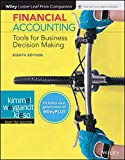
(a)
Assets (A): Assets are those items that provide value for money and future economic benefit for an organization. In simple, it can be referred to as resources possess by a business. Example: Cash, accounts receivable, inventory.
Liabilities (L): Liabilities are debt and obligations of a business. These are the claims of creditors and financial institutions against the resources of the business. Example: Accounts payable, long-term debt, and notes payable.
Expenses (E): Expenses are the costs that the businesses spend to produce and sell the goods and services to the customers or clients. Example: Cost of goods sold, rent expense, and interest expense.
Revenues (R): Revenues are the income or earnings that a business receives for delivering the goods and services. Example: Service revenue, interest revenue, and gain from sale of land.
To identify: whether the given item is an asset (A), Liability (L), Stockholders’ equity (SE), Revenue (R), or Expense (E) item.
(b)
To prepare: An income statement for Company K for the year ended December 31, 2017.
Want to see the full answer?
Check out a sample textbook solution
Chapter 1 Solutions
Financial Accounting: Tools for Business Decision Making, 8e WileyPLUS (next generation) + Loose-leaf
- Yao Ming Traders has the following transaction data: beginning inventory $9,200, purchases $70,000, purchase returns $3,000, freight-in $4,100, and ending inventory $12,500. Cost of goods sold is? a) $67,800 b) $70,300 c) $68,500 d) $66,800arrow_forwardPlease provide the answer to this general accounting question using the right approacharrow_forwardI am trying to find the accurate solution to this general accounting problem with the correct explanation.arrow_forward
- Kindly help me with this General accounting questions not use chart gpt please fast given solutionarrow_forwardI need help with this problem and general accounting questionarrow_forwardJohnPastries purchased baking equipment for $60,000. The equipment has a salvage value of $8,000 and an expected useful life of 8 years. Using the declining balance method at double the straight-line rate, calculate the first year's depreciation expense.arrow_forward
- Principles of Accounting Volume 1AccountingISBN:9781947172685Author:OpenStaxPublisher:OpenStax College
 Financial AccountingAccountingISBN:9781337272124Author:Carl Warren, James M. Reeve, Jonathan DuchacPublisher:Cengage Learning
Financial AccountingAccountingISBN:9781337272124Author:Carl Warren, James M. Reeve, Jonathan DuchacPublisher:Cengage Learning Financial AccountingAccountingISBN:9781305088436Author:Carl Warren, Jim Reeve, Jonathan DuchacPublisher:Cengage Learning
Financial AccountingAccountingISBN:9781305088436Author:Carl Warren, Jim Reeve, Jonathan DuchacPublisher:Cengage Learning


